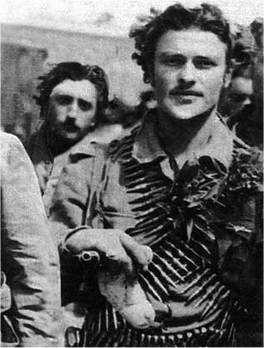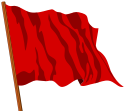Vito di Carzi
| Vito | |||||
|---|---|---|---|---|---|
 | |||||
| Born | 7 February 1927 Palazzo Carzi, Carzi | ||||
| Died | 29 October 1974 (aged 47) Somewhere near Dimizia, Salisford | ||||
| Burial | Unknown | ||||
| Issue | Ottavio di Carzi | ||||
| |||||
| House | House of Carzi | ||||
| Father | Giuseppe, 14th Count of Carzi | ||||
| Mother | Delfina di Serino | ||||
| Occupation | Political theorist, Warlord | ||||
| Part of a series on |
| Marxism |
|---|
 Red Flag |
Vito Bendeto, 15th Count of Carzi, was a Salisfordian political theorist, partisan, and communist revolutionary. He is notable for theorizing the Carzian ideology and for his role in the Salisfordian Civil War, where he led a communist paramilitary group. He most famous work is the book L'operaio, lo Stato, e la Chiesa, which laid out the basic tenets of his political ideology.
Vito di Carzi was born in 1927 to a moderately wealthy noble family. He was educated in his early life by Salforti Catholic clerics and as a young adult he attended the University of Serino. It is widely believed that when he was attending university, he was exposed to marxism and would become a proponent of marxist theory. In 1947, he would leave university and cross the border into Creeperopolis with the intention of joining the Miguelists in the Creeperian Civil War. He would ultimately end up finding the Ejército Rojo Ateo (ERA) and would join a a foreign volunteer. While serving for the Miguelists, Vito would witness atrocities committed by the ESTARES. Vito would later condemn these atrocities in his later works. Vito would later desert the Miguelists and would sneak back over the border into Salisford, where he would think on what he saw in the Creeperian Civil War.
During his career as a political theorist, he would write political manifestos of his own personal ideology. He quickly divorced his ideology from orthodox marxism, and would claim himself to be a "monarcho-communist" and a "sensibile socialist". These beliefs would lead to many communist leaders in Salisford to declare Vito to be a reactionary and a false communist. Despite these condemnations, di Carzi would cultivate a somewhat large and devoted following in some circles of Salisfordian society. These followers of di Carzi would call themselves "Carzians".
After the assassination of Maria III and the beginning of the Salisfordian Chaos, di Carzi would order his followers to organize and arm themselves. He saw this as an opportunity to "begin the Carzian revolution". This organized group would become the Fronte Carzi, and di Carzi would lead them through the civil war. Vito di Carzi was infamous for his cleverness and brutality in the war.
Vito di Carzi would die on 29 October 1974, when he was leading remnant Carzian forces which did not stand down after the monarchist victory in the civil war. The exact nature of di Carzi's death is unknown, but some historians believe he was shot by his son so the Civil War could finally end.
In recent years, some historians and pyschoanalyists have claimed that it was likely that di Carzi suffered from some sort of mental issues which would stem from his experiences in the Creeperian Civil War.